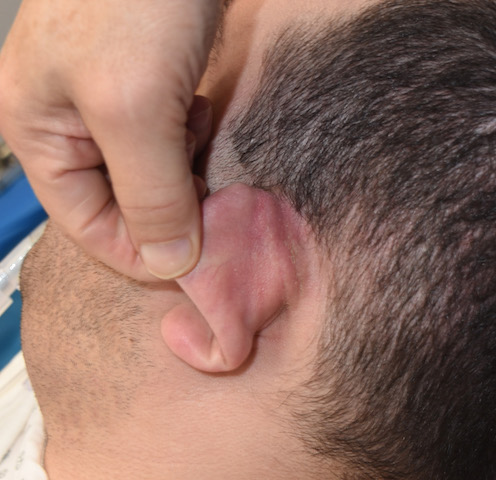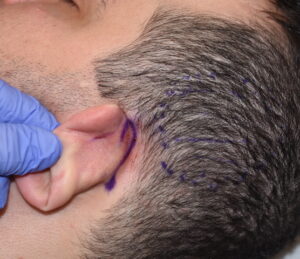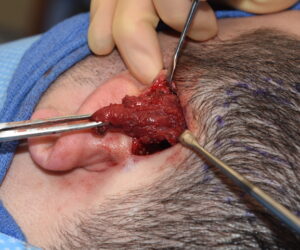Background: There are many types of aesthetic skull deformities that can be treated by bone and muscle modifications. When to comes to the side of head from the eye to the back of the head this is the only area of the skull which is covered by muscle. The temporal muscle has its origins along the parietal line of the skull which runs from the side of the forehead all the way to the back of the head. It then becomes very focused (narrow) as it passes underneath the zygomatic arch to insert onto the lower jaw.
Because of the large surface area that the muscle covers coming from the parietal skull lines it add considerable thickness to the side of the head. This thickness is greatest by the side of the eye due to the concave temporal bony fossa and less so as it crosses over the the convex temporal bone on the side of the head. But even at its thinner posterior section on the true side of the head the thickness of the muscle is still significant from an aesthetic standpoint.
The near equal, if not greater, thickness of the posterior temporal muscle to that of the bone is the basis for temporal reduction or head width reduction surgery.
Case Study: This male was bothered by the convexity of the sides of his head. He previously underwent a right temporal reduction six months previously and now returns to do the left side. Because of his prior surgery it is possible to evaluate how the postauricular scar healed.
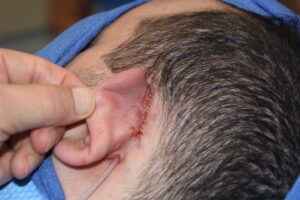
Temporal Reduction Surgery Dr Barry Eppley IndianapolisAn accelerated version of the procedure can be seen in this video.
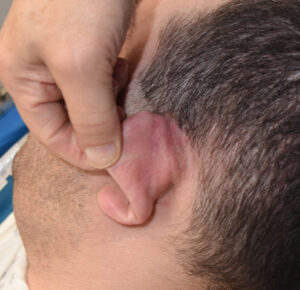
While many think that it is the temporal bone that needs to be reduced for decreasing an overly convex side of the head, it is the muscle which is the most effective. It can also be done in a scarless manner through an incision in the postauricular sulcus behind the ear. The initial aversion to muscle removal by some may be the concern of a compromise in the ability to open one’s mouth or move one’s over jaw. But that concern is not borne out by extensive clinical experience.
Highlights:
- Reduction of the width of the side of the head (head width reduction) is done by removal of the posterior temporal muscle.
- Temporal reduction muscle removal is done through a postauricular incision which heals with a near invisible scar line.
- Temporal reduction is both an effective and safe skull reshaping procedure that has no adverse effects on jaw motion.
Dr. Barry Eppley
Indianapolis, Indiana

